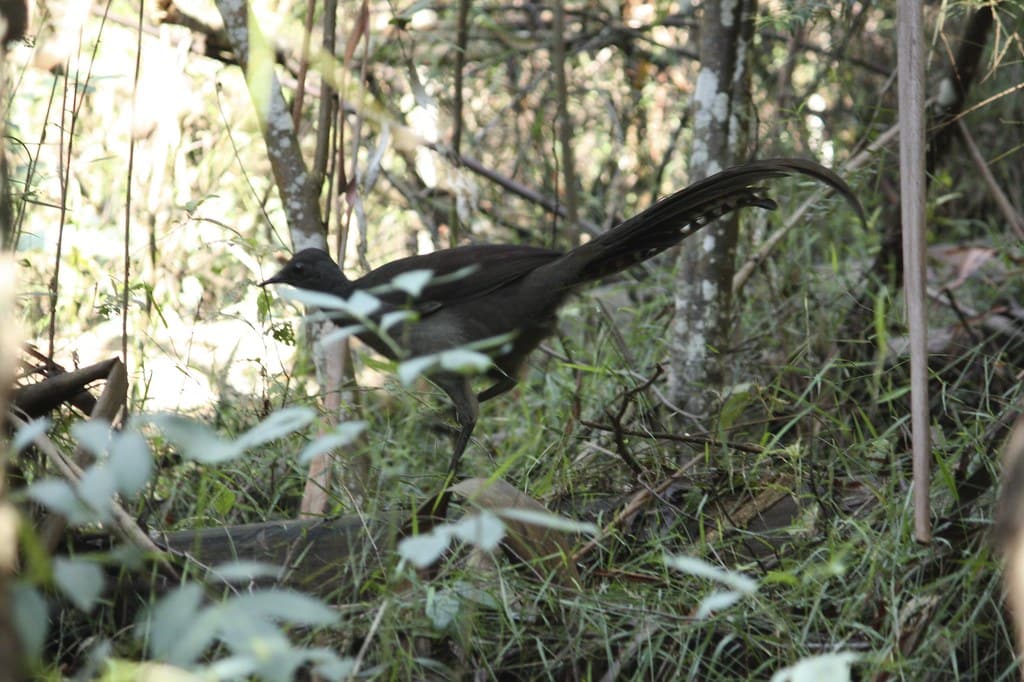In the vast tapestry of nature’s wonders, there exists a bird whose mimicry skills are so impressive that they can deceive even the most vigilant predators. This incredible avian talent serves as a survival mechanism, allowing it to thrive in habitats where being unnoticed can mean the difference between life and death. As we delve into the fascinating world of mimicry, you’ll discover why these birds are truly the masters of disguise.
The Art of Mimicry

Mimicry is an evolutionary strategy that allows organisms to replicate sounds, appearances, or behaviors of other species. In the bird kingdom, this skill is elevated to an art form. Birds with exceptional mimicry talents can replicate the sounds of other birds, animals, and even human-made noises. This ability is not just a party trick; it plays a crucial role in their survival. By mimicking the calls of predators or other species, these birds can deter threats, attract mates, or communicate with their flock more effectively.
The Master of Illusion The Lyrebird

The Lyrebird, native to Australia, is often hailed as the master of mimicry. Its repertoire includes chainsaws, camera shutters, and even other birds’ songs. The lyrebird’s ability to reproduce these sounds with astonishing accuracy is a testament to its finely tuned hearing and vocal cords. This skill is not just for show; it helps the lyrebird protect its territory by imitating the calls of predatory birds, thereby deterring real threats.
The Clever Mockingbird

Another talented mimic is the Mockingbird, found in North and South America. This bird is famous for its ability to sing continuously with a diverse array of sounds. It can replicate the songs of dozens of other bird species, making it a master of vocal variety. This mimicry helps the mockingbird establish dominance in its territory by confusing potential competitors and predators with a cacophony of sounds.
The Versatile African Grey Parrot

The African Grey Parrot is often considered the genius of the bird world. Not only can it mimic sounds, but it can also understand and use human language in context. This bird’s mimicry extends to imitating household noises like telephones and doorbells. Their impressive vocal skills help them bond with their human companions and communicate effectively in the wild. Such adaptability showcases their intelligence and enhances their survival.
The Survival Strategy Why Mimicry Works

Mimicry is a clever survival strategy that confuses predators and competitors. By imitating the sounds of more dangerous animals, birds can create the illusion of a more threatening presence. This deception can make predators think twice before attacking. Additionally, by mimicking the calls of other species, birds can infiltrate rival territories and access resources without immediate confrontation.
How Birds Learn to Mimic

Birds learn mimicry through a combination of innate ability and environmental exposure. Young birds often learn by listening to adults and practicing the sounds they hear. This learning process is similar to how humans acquire language. Over time, a bird’s repertoire expands, and it becomes more adept at using mimicry in various situations. This learning journey highlights the bird’s adaptability and intelligence.
The Role of Mimicry in Mating Rituals

For many birds, mimicry plays a vital role in attracting mates. A bird with a diverse vocal range can impress potential partners, showcasing its health and vitality. In species like the lyrebird, males use their mimicry skills as part of an elaborate courtship display. The ability to replicate complex sounds can be an indicator of genetic fitness, making it a crucial factor in mate selection.
Challenges of Mimicry in Urban Environments

As human activity encroaches on natural habitats, birds with mimicry skills face new challenges. Urban environments introduce a plethora of unfamiliar sounds, from car alarms to construction noise. While some birds adapt by incorporating these sounds into their repertoire, others may struggle with the sensory overload. This shift in auditory landscape requires birds to continuously adapt their mimicry skills for survival.
Birds Beyond Sound Visual Mimicry

While sound mimicry is remarkable, some birds also engage in visual mimicry. Species like the Potoo use their plumage to blend seamlessly with tree bark, making them nearly invisible to predators. This visual deception complements their vocal mimicry, providing a comprehensive defense mechanism. The combination of auditory and visual mimicry illustrates the multifaceted strategies birds employ for survival.
Mimicry and Evolution

Mimicry is a fascinating example of evolutionary adaptation. Over generations, birds with exceptional mimicry skills have been naturally selected for their ability to survive and reproduce. This evolutionary process has honed their vocal abilities, ensuring that these birds continue to thrive in diverse environments. Mimicry is not just a learned behavior; it is an intrinsic part of their evolutionary lineage.
The Impact of Climate Change on Mimicry

Climate change poses a significant threat to birds with mimicry skills. As habitats change, birds must adapt to new environmental conditions and sounds. Rising temperatures and habitat loss can affect the availability of resources, forcing birds to alter their behaviors. Despite these challenges, many birds continue to demonstrate resilience and adaptability, underscoring the importance of mimicry in their survival.
The Role of Mimicry in Ecosystem Balance

Mimicry contributes to the balance of ecosystems by regulating predator-prey interactions. By imitating the calls of predators, birds can influence the behavior of other species, preventing overpopulation and maintaining ecological equilibrium. This intricate web of interactions highlights the interconnectedness of nature and the crucial role mimicry plays in sustaining biodiversity.
Technological Advancements in Studying Mimicry

Advancements in technology have revolutionized the study of mimicry. Sophisticated recording equipment and software allow researchers to analyze bird calls with unprecedented precision. These tools provide insights into the complexity of mimicry and its evolutionary significance. As technology continues to evolve, our understanding of mimicry and its role in avian life will deepen, offering new perspectives on this remarkable skill.
Conservation Efforts for Mimicry Birds

Conservation efforts are crucial for protecting birds with mimicry skills. Habitat preservation and restoration initiatives aim to safeguard the environments these birds depend on. Public awareness campaigns also play a role in educating communities about the importance of biodiversity and the need to protect these remarkable creatures. By supporting conservation efforts, we can ensure that future generations continue to marvel at the wonders of avian mimicry.
The Future of Avian Mimicry

The future of avian mimicry lies in the delicate balance between adaptation and conservation. As birds continue to evolve and adapt to changing environments, their mimicry skills will be tested in new ways. However, with ongoing efforts to protect their habitats and raise awareness about their ecological importance, there is hope that these incredible creatures will continue to thrive for generations to come.
- 10 U.S. States With the Most Endangered Species - August 24, 2025
- 15 Most Venomous Snakes Found in Tropical Jungles - August 24, 2025
- 10 Animal Records That Will Leave You in Awe - August 24, 2025

